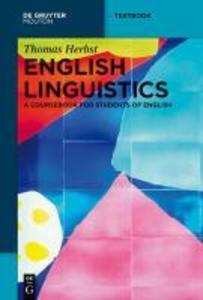
Sofort lieferbar (Download)
The book introduces the reader to the central areas of English linguistics. The main sections are: the English language and linguistics - sounds - meaning-carrying units - sentences: models of grammar - meaning - utterances - variation. Notably, the book is written from a foreign student's perspective of the English language, i. e. aspects relevant to foreign language teaching receive particular attention. A great deal of emphasis is put on the insights to be gained from the analysis of corpora, especially with respect to the idiomatic character of language (idiom principle, valency approach). In addition, the text offers basic facts about the history of the language and elaborates on the differences between British and American English. The author demonstrates that a linguistic fact can usually be described in more than one way. To this end, each section contains a chapter written for beginners providing a broad outline and introducing the basic terminology. The remaining chapters in each section highlight linguistic facts in more detail and give an idea of how particular theories account for them. The book can be used both from the first semester onwards and as perfect study aid for final B. A. -examinations.
Inhaltsverzeichnis
1;Contents;6 2;Preface;14 3;1. Facts about English;18 4;2. Principles of modern linguistics;29 5;3. Language, intuition and corpora;44 6;4. The sounds of English: phonetics;60 7;5. Phonology;73 8;6. Phonetic reality;84 9;7. Contrastive aspects of phonetics and phonology;93 10;8. Morphology;100 11;9. Word formation;112 12;10. Phraseology;142 13;11. Syntax: traditional grammar;158 14;12. Valency theory and case grammar;188 15;13. Theories of grammar and language acquisition;217 16;14. Semantics: meaning, reference and denotation;237 17;15. Meaning relations;250 18;16. Ways of describing meaning;264 19;17. Pragmatics;282 20;18. Texts;300 21;19. Variation in language;319 22;20. Linguistic change;332 23;Postscript;347 24;Bibliography;349 25;Index;382
Produktdetails
Erscheinungsdatum
17. Juni 2010
Sprache
englisch
Seitenanzahl
383
Reihe
Mouton Textbook
Autor/Autorin
Thomas Herbst
Verlag/Hersteller
Kopierschutz
mit Adobe-DRM-Kopierschutz
Produktart
EBOOK
Dateiformat
PDF
ISBN
9783110215489
Entdecken Sie mehr
Bewertungen
0 Bewertungen
Es wurden noch keine Bewertungen abgegeben. Schreiben Sie die erste Bewertung zu "English Linguistics" und helfen Sie damit anderen bei der Kaufentscheidung.









